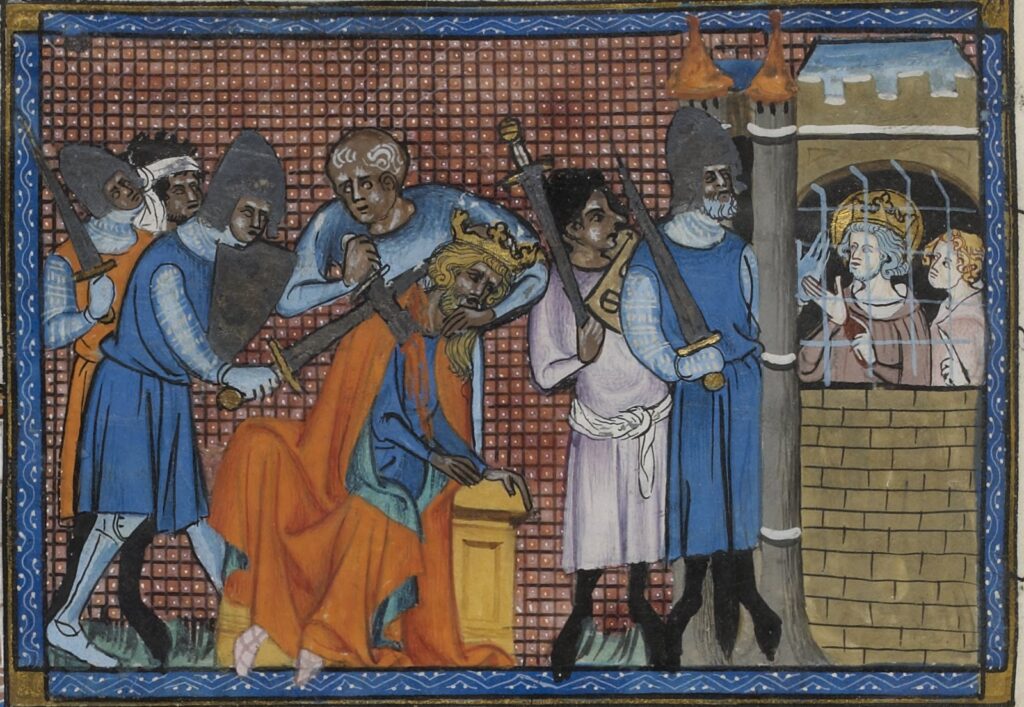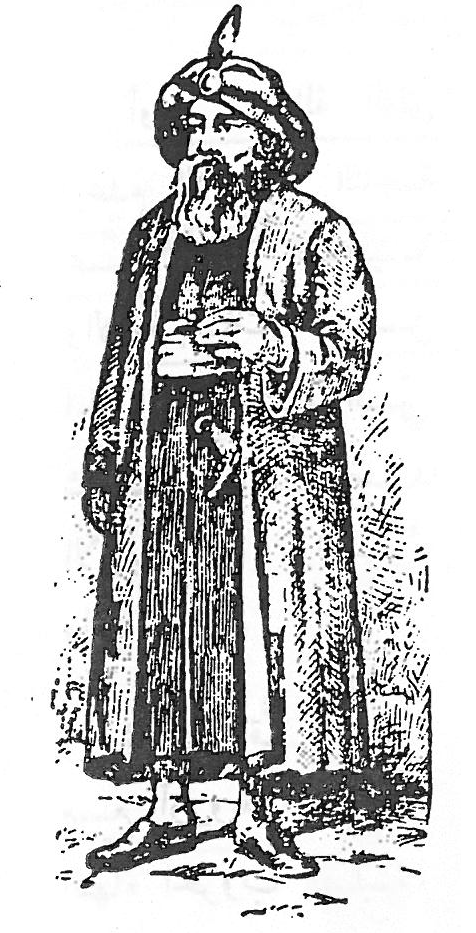Everyone knows the saying «From dirt to princes». However, in history, such rises did not happen so often …
There is no exact information about the origin of Beibars. It is known only that he was born about 1223. About the place of birth there is still a debate. Some historians claim that he came from the Cumans steppes, others assure that the future sultan was born in the Crimea. In favor of the second version says that, having achieved power and wealth, Beibars sent to the Crimea generous gifts and ordered to build a mosque there, the ruins of which have survived to this day.
In 1242, Beibars’ village was attacked by Mongols, and together with other young men the young man was enslaved. Steppe slaves were highly valued on the slave market. Strong young men were often bought by Egyptian nobles to make them into mamluks — members of a separate class of slaves. Slaves were converted to Islam and rigorously trained to make elite warriors. Beibars suffered the same fate. He was noticed by Emir Aydakin al-Bundukdar, who sent the young man to a Mameluke training camp on the island of Roda on the Nile. Soon the emir fell into disfavor with Sultan As-Salih II, and he confiscated all his slaves. The ruler of Egypt was impressed by the tall warrior from the steppes, and Beibars was appointed one of the chiefs of the Mamluk army.
A former slave who led the Egyptian army.
Military talents had to be demonstrated at once. The Sixth Crusade led by French King Louis IX was approaching the Muslim lands. In 1250 Beibars took part in several major battles, which led to the defeat of the knights and the capture of their leader. At this time, the sultan who patronized the Mamluks died, and his son Turan Shah II came to the throne. The new ruler decided to remove his father’s nominees from all important posts and appoint people loyal to him personally. His rule did not last long: once drunk Turan Shah started a fight with the Mamelukes and, fleeing, tried to hide from them in the Nile, but there and was killed, as it is believed, personally Beibars.

Mamluks killing Turan Shah. Medieval miniature. Source: Wikimedia Commons
A succession of rulers began. The sultans of Egypt were changing very quickly, and it was difficult to predict who would come to power next. Fearing for his life, Beibars, like many other prominent Mamluks, waited out this turbulent period in Syria until Qutuz ascended the throne in 1259. He gave assurances of security to the heads of the Mamluks.
The Sultan brought the warlords closer in time. In 1260 an ambassador arrived in Cairo with an ultimatum: the Mongol army under the command of Genghis Khan’s grandson Hulagu had already conquered Iran and was moving on Egypt. The Sultan feared for his state, whose army could not cope with the Mongol horde, but chance intervened. Just at that time the great Mongol Khan Munkhe died, and Hulagu, as a potential heir, together with most of his army moved on the way back. The attack on Egypt was entrusted to the warriors under the command of the trusted commander Kit-Bugi. Having learned about it, Beibars advised the sultan to execute the Mongol ambassadors and immediately strike a preemptive strike. The ruler agreed with the plan, and the Egyptian army moved out on the campaign. On September 3, 1260 in the battle of Ain Jalut near Nazareth the army of Beibars defeated the Mongols and captured Kit-Buga.
After the execution of the Mongol commander, the head of the Mamluks was sure that the Sultan would reward him worthily, but Kutuz delayed, fearing the ambitions of the commander. Angry Beibars organized a conspiracy, and on the way back to Cairo killed the Sultan. The emirs proclaimed him the new ruler of Egypt.
The Sultan of Egypt, who conquered half the world.
Having suppressed the minor resistance, Beibars took up more serious problems. Namely the Crusaders, who had settled in Syria, and the approaching new wave of Mongol invasion. In order to cope with the angry Hulagu, Beibars made an alliance with the Golden Horde, whose ruler Berke Khan was only too happy to spite his relative. This alliance also became a trade alliance — slaves captured by the troops of the ulus Dzhuchi were delivered to Egypt through Italian merchants. The best of the slaves were trained to become mamluks. Relations between the sultan and the khan became so dense that in 1262 Beibars offered Berke to accept Islam, which, however, the khan refused.

Sultan Beibars. Source: Wikimedia Commons
In 1263, the Egyptian army laid siege to Akra, the capital of what was left of the Crusader Kingdom of Jerusalem. The fortress could not be taken, but its suburbs were ravaged. On March 21, Beibars’ warriors laid siege to Arsuf, and after nine days the fortress surrendered. Although the Sultan promised the surviving defenders free passage, he did not keep his word to the infidels. All the surviving Christians were enslaved. A similar fate befell the knights in several other Crusader strongholds. Possessions of the Egyptian sultan expanded and reached the territory of modern Turkey.
In 1266, the Egyptians ravaged the Kingdom of Cilicia and captured the heir to the throne. King Hetum I had to give the Egyptians several border fortresses, even realizing that this would anger the Mongols, on whom the country was dependent. Soon the monarch abdicated and went into a monastery, and the heir had to pay tribute to both the Mongols and the Egyptians at the same time.
In 1268, Beibars captured Antioch. The Christian population was either slaughtered or enslaved. Gold coins were looted so much that they were measured in cups. The ruler of Antioch, Boemund VI the Beautiful, was forced to ask for peace. According to legend, Beibars himself came to his headquarters in Tripoli in the guise of an ambassador to scout the city’s fortification system. The terms of peace pleased him, and there was no new war with Boemund.
Two years later, Beibars began to strengthen the western borders of his state, fearing a new Crusader invasion, but the Eighth Crusade was defeated in Tunisia. Two more years later Edward I of England, who led the Ninth Crusade, tried to attack the Egyptian sultan’s holdings and negotiate an alliance with the Mongols. But this led to nothing, except an unsuccessful attempt to poison the English king. Edward took the hint and returned to England.
In the late 1260s, Beibars began a campaign against the assassins. The order of secret assassins had terrified many rulers of the Middle East for many years, but it was the Egyptian sultan who managed to finally destroy their system of secret fortresses in the mountains of Syria. It was said that some assassins who lost their homes entered the sultan’s service.

Monument to Beibars I in Cairo. Source: Wikimedia Commons
In 1276, the Egyptians invaded Nubia and forced the ruler to pay tribute again. The following year, Beibars went to fight in Syria, hoping to be better prepared for another invasion by the Mongols and their allies. In order to eliminate one of the rulers of local principalities, a clever trap was prepared: at the feast the emir was served a bowl with poisoned koumiss, but he suspected something, and cleverly swapped his and the Sultan’s vessels. As a result, Beibars drank the poison and died a few weeks later.
During his reign, Beibars I increased his state and won many victories. He remained in history as the winner of the Crusaders and Mongols. A monument to him stands in the courtyard of the Egyptian National Military Museum.
